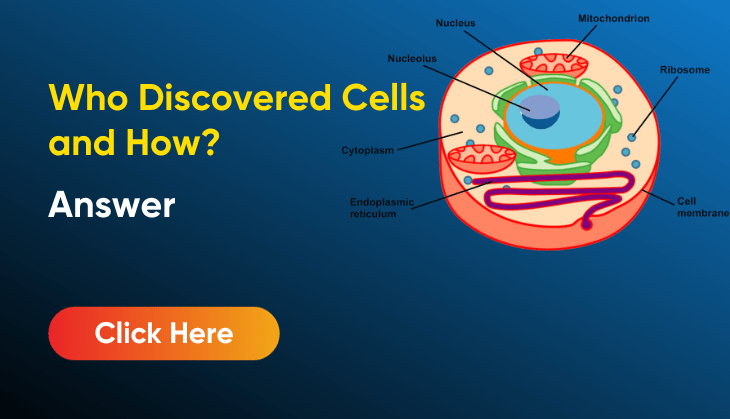Who discovered Cell and how The discovery of the cell is credited to Robert Hooke, an English scientist, who made the breakthrough in 1665. Using a rudimentary microscope, Hooke examined thin slices of cork and observed small, box-like structures. He coined the term “cells” to describe these compartments, likening them to the tiny rooms or cells occupied by monks in monasteries. Hooke’s observations were detailed in his book “Micrographia,” where he presented his findings along with illustrations. Although Hooke’s microscope lacked the resolution and magnification power of modern instruments, his discovery laid the foundation for cell biology and the development of the cell theory. This theory, which posits that all living organisms are composed of cells, became a cornerstone of biological understanding and paved the way for further discoveries in the field of microbiology and cellular biology.

Who discovered Cell and how
- Discovery: The cell was discovered by Robert Hooke in 1665.
- Observation: Hooke observed thin slices of cork under a microscope.
- Description: He noticed small, box-like structures within the cork, resembling cells in a monastery.
- Term: Hooke coined the term “cell” to describe these compartments.
- Documentation: His observations were detailed in his book “Micrographia.”
- Significance: Hooke’s discovery laid the foundation for cell biology and the cell theory.
- Cell Theory: The cell theory, based on Hooke’s observations, states that all living organisms are composed of cells.
- Impact: This discovery revolutionized biology and led to further advancements in microbiology and cellular biology.
Development of Microscopy
- Origins: Microscopy originated in the late 16th century, with early developments by Zacharias Janssen and Hans Jansen.
- Lens Technology: Advancements in lens manufacturing enabled better magnification and resolution in microscopes.
- Compound Microscope: Robert Hooke’s use of a compound microscope in the 17th century allowed for the discovery of cells.
- Optical Improvements: Throughout the centuries, improvements in optical design enhanced the clarity and quality of microscope images.
- Electron Microscope: In the 20th century, the invention of the electron microscope revolutionized microscopy by enabling visualization at the atomic and molecular levels.
- Specialized Techniques: Various specialized microscopy techniques, such as fluorescence microscopy and scanning probe microscopy, have been developed to address specific research needs.
- Interdisciplinary Impact: Microscopy has had a profound impact across disciplines, including biology, medicine, materials science, and nanotechnology.
- Continued Innovation: Ongoing advancements in microscopy continue to push the boundaries of scientific exploration and discovery.
Robert Hooke and the Cork Cells
- Discovery: In 1665, Robert Hooke observed cork cells under a microscope.
- Observation: Hooke noticed small, box-like structures within the cork.
- Term: He coined the term “cells” to describe these structures.
- Description: Hooke likened the cells to the individual rooms or cells in a monastery.
- Documentation: His observations were published in his book “Micrographia.”
- Significance: Hooke’s discovery laid the foundation for cell biology and the cell theory.
- Contribution: His work highlighted the importance of microscopic examination in scientific inquiry.
- Legacy: Hooke’s contribution continues to inspire scientific research and serves as a landmark in the history of biology.
Conclusion
In conclusion, Robert Hooke’s discovery of cork cells in 1665 represents a watershed moment in the history of science. His keen observation, meticulous documentation, and the subsequent coining of the term “cells” laid the foundation for the development of cell biology and the cell theory. Hooke’s work not only revealed the existence of cells but also underscored the importance of microscopic examination in scientific inquiry. His contribution continues to inspire researchers and serves as a testament to the power of observation in unlocking the mysteries of the natural world. Hooke’s legacy persists in the fundamental principles of biology and stands as a landmark achievement in the annals of scientific discovery.
FAQs
Q: 1. Who discovered the cell?
Ans: The cell was discovered by Robert Hooke, an English scientist, in 1665.
Q: 2 How did Robert Hooke discover the cell?
Ans: Hooke discovered the cell by examining thin slices of cork under a microscope and observing small, box-like structures within them
Q:3.What did Robert Hooke call these structures?
Ans: Robert Hooke coined the term “cells” to describe the small compartments he observed in cork, likening them to the individual rooms or cells in a monastery.
Q: 4.What was the significance of Robert Hooke's discovery?
Ans: Hooke’s discovery of cells laid the foundation for cell biology and the development of cell theory, which states that all living organisms are composed of cells.






